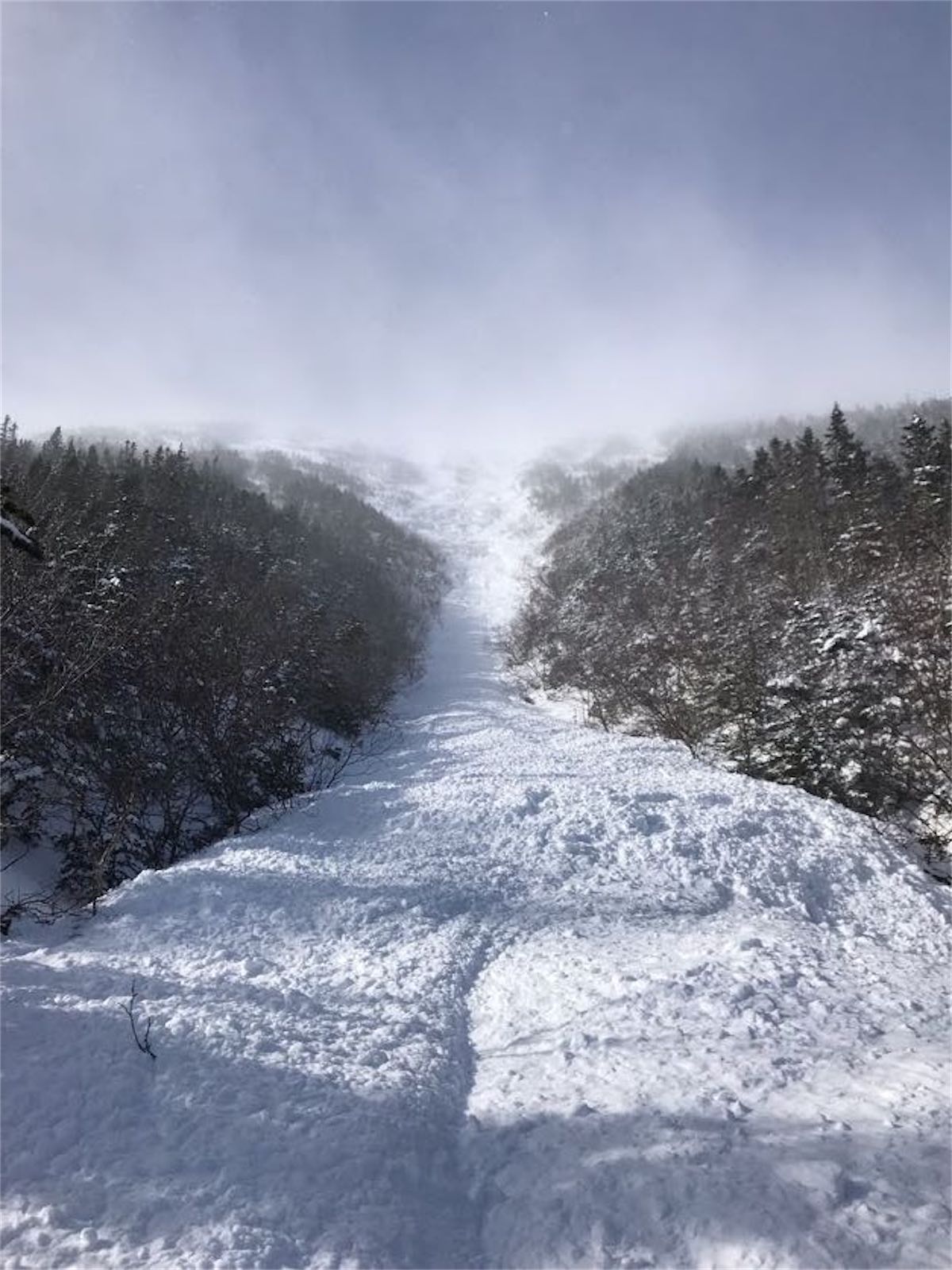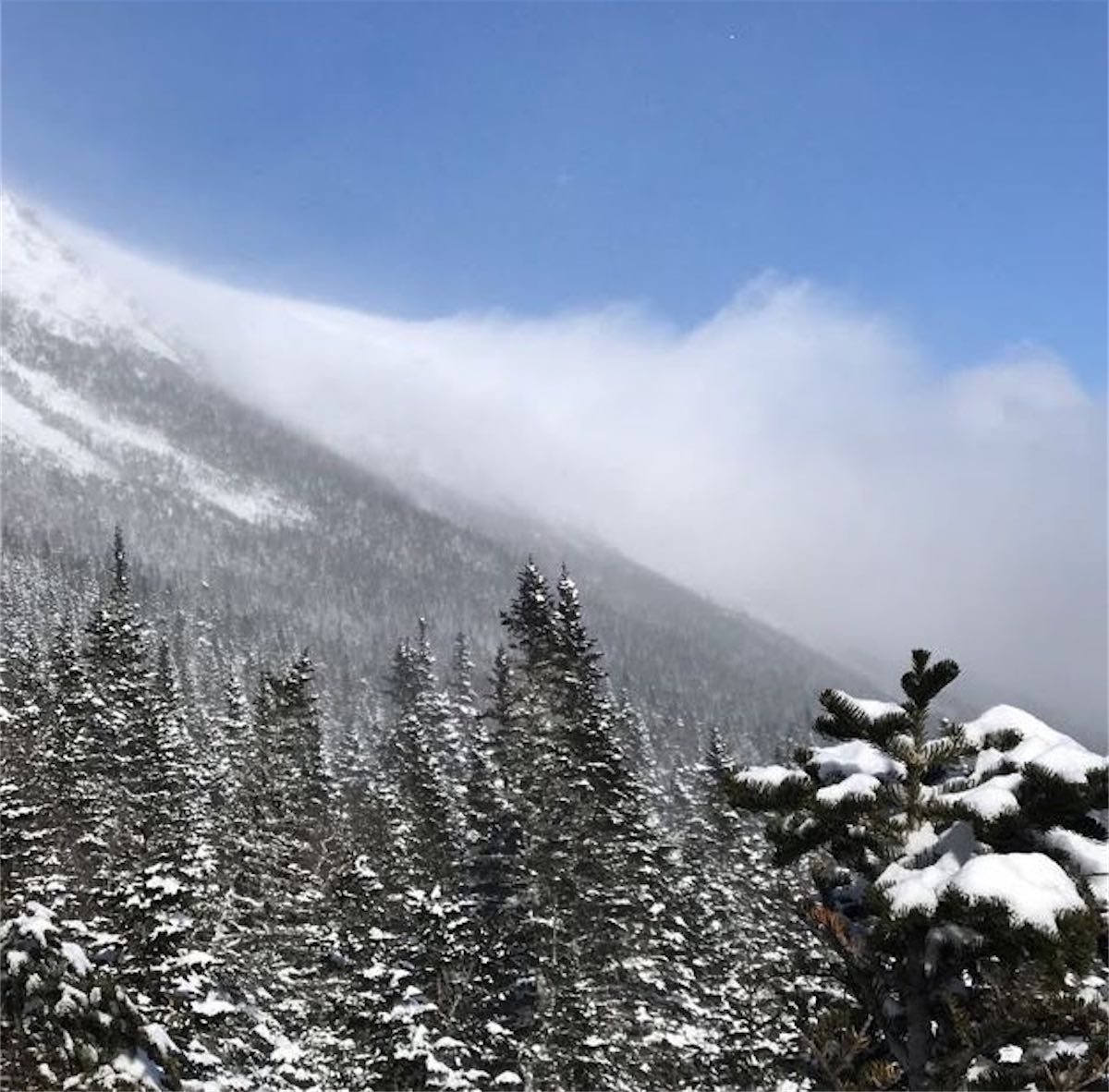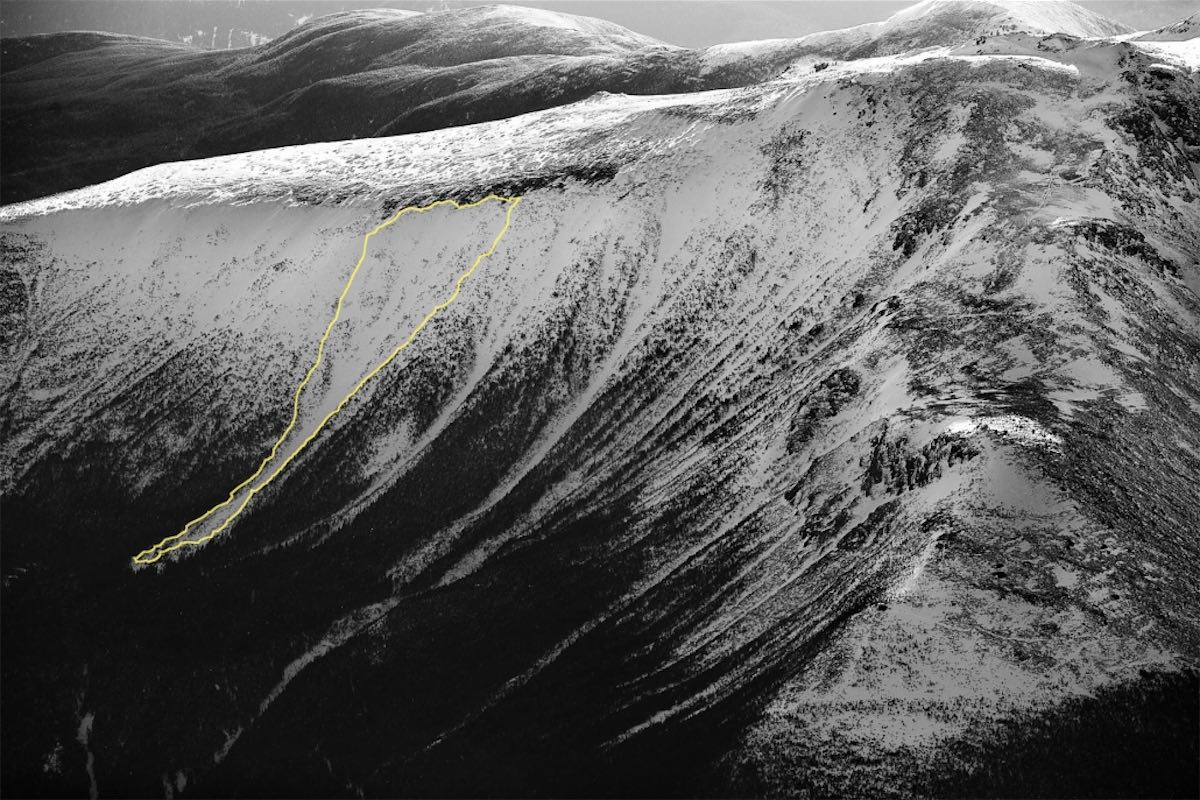
Report from Mount Washington Avalanche Center
On the morning of February the 5th, 2022 there were 16 new inches of snow at Hermit Lake. Around 0730, during an early morning drive to Pinkham Notch from the Mount Washington Valley, it was apparent that significant wind loading had already begun. The higher summits and ridgelines were entrenched in thick plumes of moving snow. Ridgetop winds were blowing from the northwest at 40-60mph earlier than was forecast, expediting wind slab formation on east and south aspects. The avalanche danger rating was CONSIDERABLE and the primary avalanche problem was wind slab on northeast through south aspects at middle and upper elevations
On a tour to the Gulf of Slides via the Graham Trail, two snow rangers observed the aftermath of a D2-sized avalanche in Main Gully. While discussing the nature of the avalanche and observing the rapid and intense snow loading from northwest winds, a second D2-sized avalanche occurred in Main Gully. Debris from these two avalanches was 8-12 feet deep. No one was caught or injured in either of these avalanches, however, six people in three unique teams of two had been traveling at the bottom of Main Gully within 20-30 minutes of both avalanches. Snow Rangers gathered this information from interactions with all three parties on the Gulf of Slides Ski Trail on their approach.
The first party had spent a considerable amount of time in Main Gully. They dug a snowpit in the funnel of the gully and performed numerous snowpack tests, including a Ruschblock which reportedly failed at RB2. Eventually, the party turned around and chose not to continue uphill. It was also communicated that the party leader chose to turn the group around not because of the snow, but instead because of the experience level of the other member. This party was out of the runout and skiing down the Gulf of Slides Trail roughly 20-30 minutes before the first avalanche occurred.
The second party skied the lower portion of Gully #3 as well as the lower portion of the Main Gully. They had mentioned that they stopped before reaching the prominent ice pitch in the Main Gully. It is unknown if they had conducted any stability tests or which gully they had skied first.
The final party did not choose to climb and ski Main Gully, but like the previous two parties before them, they did enter the funnel of the Main Gully where they transitioned to ski. This party exited Main Gully minutes before the first avalanche occurred. Debris from the avalanche buried and went beyond their transition point.

All three parties unknowingly nearly missed being caught and buried in an avalanche by 30 minutes or less. Several takeaways can be gathered from the actions of these three parties.
When digging a snowpit it is important to dig in a safe location. Safe locations change throughout the year as conditions evolve. Test slopes that are similar in aspect and elevation are ideal spots to dig snow pits, but it is critical not to create exposure to an avalanche hazard while digging. On February 5th, the base of Main Gully was not a safe location because there was exposure to avalanche hazards from above as identified by two of the 5 red flags – new snow and wind-transported snow. These red flags can be identified easily without digging in the snow and are often all the information that is needed to make a good decision.
During a day in the mountains, as red flags or signs of instability present themselves, it is important to be able to adapt the tour plan or maintain the ability to retreat from an area that seems unsafe. In this case, the bottom of an avalanche path may seem harmless, but debris travels far and fast and its effects are amplified in a terrain trap feature, such as the bottom of Main Gully. This increases the potential for burial or deep burial if caught. Additionally, digging test pits takes time, which ultimately increases exposure time to the hazard.
One of the most important takeaways from this case is that sometimes the most critical information is what is most easily observed. Digging in the snow can give a lot of valuable information, but it is akin to searching for a spark in a fire when other warning signs are present. Red flags like new snow and significant and obvious wind loading is conveying all the information that is needed to make the decision to stay off these slopes to avoid the avalanche hazard.
For those beginning to travel in avalanche terrain – take an avalanche course, hire a guide, and find a mentor. Also consider that skills learned from a guide, mentor, or course are perishable. It takes time, experience, reading, and engaging discussions to maintain and build these skills for safe and lifelong travel in the backcountry.
